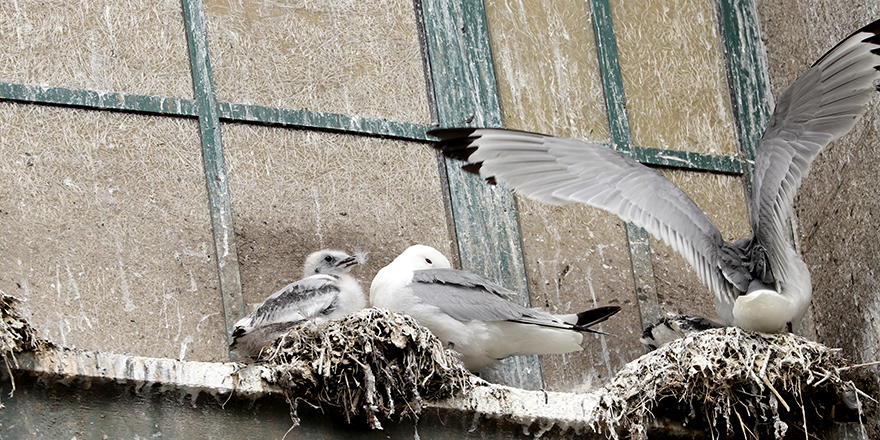Tyne Bridge Restoration
The restoration of the Tyne Bridge will potentially be the largest hurdle the Tyne Kittiwakes have faced in a generation. Work has started and there is going to be some disturbance to these important » red-listed sea birds as they return for the 2024-28 breeding seasons.
Kittiwake Hotels
“Temporary artificial structures have been built to help offset the displacement
of a portion of the Tyne Bridge Kittiwake colony as the bridges two pairs
of twin towers are restored”

Ledges will also be restored on the Bridges Towers. So not only will the Kittiwakes be allowed to return to nest on the Towers after the restoration work is completed, but there will be more space available afterwards for pairs to nest.
Tyne Bridge – Tower – Gateshead
with a Kittiwake Hotel on the top
by Paul Buskin – February 2024
Up to 1,105 pairs currently nest on the Tyne Bridge, which represents the largest colony of Tyne Kittiwakes along the River Tyne. The nesting Kittiwakes are distributed between both the Gateshead and Newcastle side of the river. They can be seen nesting high up on the Bridges towers, and the green metal girders in between.
Have Lessons
been learnt?
In recent years dozens of Kittiwakes have become FATALLY trapped in anti-bird netting on the Tyne Bridge (largely on the Newcastle side of the bridge), Due to obvious ACCESS issues, it has not been possible to rescue them. It has also been very difficult for those responsible for the bridge to maintain any such anti-bird netting.
“If anti-bird netting cannot be maintained effectively, should it be used?”
As 2022 dawned, notices were posted announcing the commencement of upcoming works on the Tyne Bridge. These planning notices mentioned new anti-bird netting and the installation of new ledges on some of the bridges towers. Details were very limited and it was not clear if the available space for the Kittiwakes would be reduced and how many if any pairs of Kittiwakes may be displaced.
In June 2022 Newcastle City Council secured the necessary funding required to repair and repaint the Tyne Bridge from the government and announced the allocation of a private contractor to carry out the works. Discussions have taken place between Newcastle City Council, Tyne Kittiwake Partnership and Esh Construction regarding the Kittiwake colony nesting on the bridge.

Despite assurances that they will be allowed to continue to nest on the
Tyne Bridge, there are concerns amongst volunteers and local birdwatchers that additional anti-bird spikes/netting will be installed on the Newcastle side of the quayside on the bridge close to the Guildhall. Grants are being offered to local businesses, to improve their outdoor areas.
“Will the Kittiwakes that were there first, be considered during any applications
and will these outdoor areas cover a wider area?”
There will remain a need to look out for our Tyne Kittiwakes, before, during and after the restoration work on the Tyne Bridge. Volunteers are watching out for any new anti-bird deterrents being added during and immediately following the restoration work.
“Some may say this iconic bridge was not built for birds”
Every day, land that was filled with wildlife is replaced with man-made structures to cater for our own expansion. It is great to have an opportunity to give something back. The Kittiwakes have adopted the Tyne Bridge, as they feel safe and they love our company during the spring and summer months. They have fallen in love with the panoramic views, our big river, the quaysides of Newcastle and Gateshead; and the Geordie accent.
“Kittiwakes are part of our local heritage. Kittiwakes have nested
along the river Tyne longer than many of us have been alive“
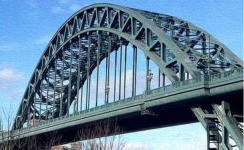
Brand NEW nesting sites
Additional temporary artificial structures, very different to the existing
» Saltmeadows Tower are being provided which could help offset any likely disturbance to the Kittiwakes during the restoration of the Tyne Bridge. It is likely there will be some disturbance; despite any efforts to avoid this, over the next 4 years.
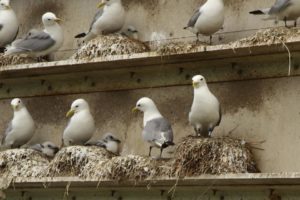
If there had been the provision of a new Saltmeadows Tower Cam this could have helped stakeholders to further research the existing artificial tower in Gateshead. The footage could have contributed to the design of future artificial structures for Kittiwakes. Additional structures are also likely to be needed as the colony is expanding and over two dozen pairs of Kittiwakes have already been displaced due to the introduction of further anti-bird deterrents on Newcastle Quayside in recent years.
Kittiwake Tower photos by Andrew Rickeard
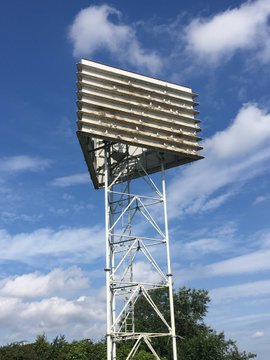
The existing Saltmeadows Tower could also be upgraded with a new improved version. If more Kittiwakes could be encouraged to nest, on an artificial structure where the Saltmeadows Tower is currently located, this could make it less vulnerable to predators.
“Could the ledges the Kittiwakes nest on be smaller so other larger gulls etc cannot land? Are some sides more popular than others? What works well? What does not work well? Could it be larger, so there is capacity for more?”
Kittiwakes upon the Tyne have started efforts to help look out for our local breeding population of Kittiwakes on the Tyne Bridge. There is not an option to consider trying to relocate the Kittiwakes from the Tyne Bridge. Over 1,000 pairs nest there; it is perfect for them, and they don’t disturb anyone. The colony is so large, it would take many structures to house them. This would also be a backward move, as additional capacity is already needed as the colonies are expanding. The Kittiwakes on the bridge need us to look out for them so they can continue to bring life to future generations of this soft gentle gull.
“Why are we helping the Kittiwakes to nest along the Tyne?”
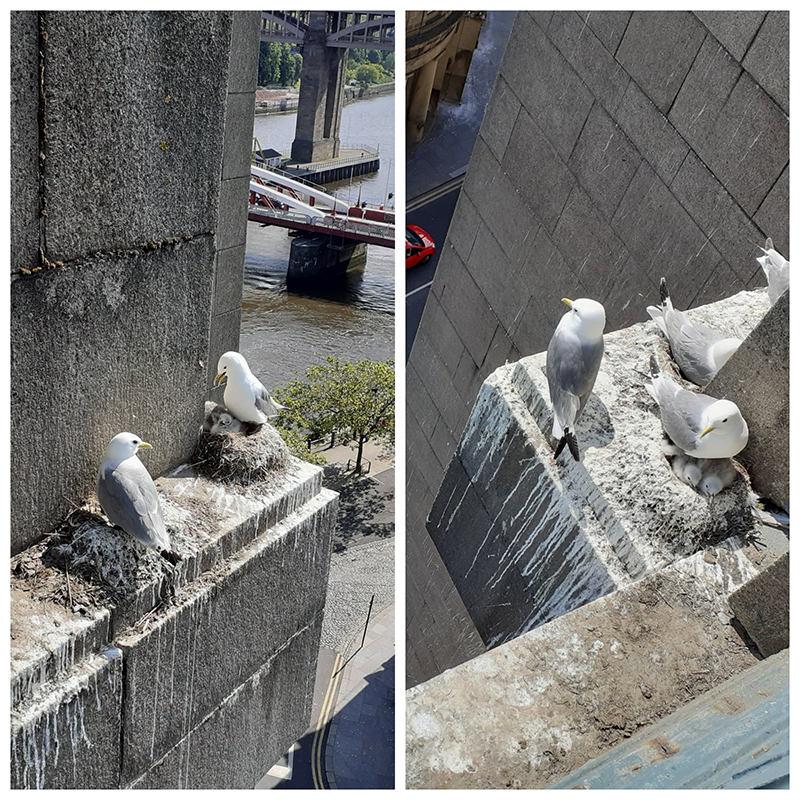
Kittiwake nesting on the Tyne Bridge by Helen
The UK Kittiwake population has fallen by 60% since 1986. Our climate is changing; there is less food available for Kittiwakes due to overfishing, pollution and the warming of our seas and oceans. These factors are making life very difficult for Kittiwakes. The breeding population along the quaysides of Newcastle and Gateshead are the furthest inland breeding colonies of Kittiwakes in the World.
As Kittiwake numbers are shrinking elsewhere, these urban colonies will become even more important. Whilst coastal populations of Kittiwakes continue to decline, the inland colonies along the Tyne are faring better, and research shows a rising population. The Kittiwakes themselves are choosing to come inland to avoid the changing environment along our coasts. Availability of food and pollution free water will remain essential for them. Despite all these factors, Kittiwakes are still vulnerable to extreme spring weather, even within the inland colonies.
“An opportunity to study a seabird colony in the heart of Newcastle upon Tyne”
Many of us have to travel to coastal cliffs and islands usually to witness a Kittiwake nesting. This is a great opportunity for the younger generation to witness nature up close. A LIVE wildlife show every spring/summer.
